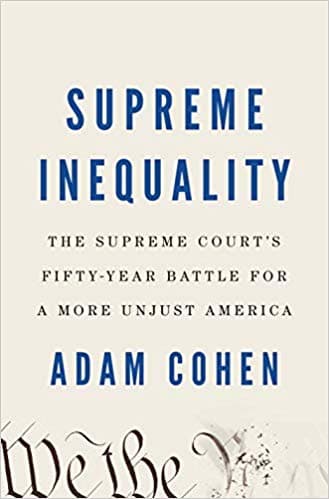
Book Review Summary: Supreme Inequality: The Supreme Court's Fifty-Year Battle for a More Unjust America
Introduction
In "Supreme Inequality: The Supreme Court's Fifty-Year Battle for a More Unjust America," author Adam Cohen delves into the conservative direction of the Supreme Court over the last fifty years since the Nixon administration. Cohen examines the significant Supreme Court rulings since Nixon and reveals how the Court has rarely veered away from a pro-corporate agenda, contributing to the soaring inequality in the United States. This book serves as a wake-up call to readers, highlighting the Supreme Court's role in shaping society and the impact of its decisions on marginalized groups.
About Adam Cohen
Adam Cohen is a New York Times bestselling author known for his engaging and insightful writing style. With a background in law, Cohen brings a unique perspective to his exploration of the Supreme Court's impact on American society. His previous works, including "Imbeciles: The Supreme Court, American Eugenics, and the Sterilization of Carrie Buck" and "Nothing to Fear: FDR's Inner Circle and the Hundred Days That Created Modern America," have garnered critical acclaim for their ability to combine legal expertise with compelling storytelling.
Analysis of Views
- The Conservative Takeover: Readers express their shock and disappointment at the conservative direction of the Supreme Court since Nixon's administration. Many feel that the Court has consistently sided with corporate interests and has eroded the rights of disadvantaged groups, such as minorities and the poor.
- Lack of Checks and Balances: Some readers argue that the Supreme Court has become a political body, with justices appointed based on their ideological beliefs rather than their ability to provide impartial justice. They believe that this lack of checks and balances has contributed to the erosion of democracy and the entrenchment of inequality.
- Importance of Historical Context: Readers appreciate the historical context provided by Cohen, which helps them understand the trajectory of the Supreme Court over the past fifty years. They find it heartbreaking to see how far-reaching decisions made during this period have led to the current state of inequality in America.
- Lack of Timelines and Organization: A few readers express frustration with the lack of timelines or a clear organization of cases discussed in the book. They feel that this makes it difficult to follow the progression of events and understand the full impact of each ruling.
- Impact on Marginalized Groups: Readers are particularly concerned about the impact of Supreme Court rulings on marginalized groups, such as women, minorities, and low-income individuals. They believe that these rulings have exacerbated existing inequalities and hindered progress towards a more just society.
Reasons for Recommendation
- Informative and Accessible: Many readers appreciate how Cohen presents complex legal concepts in an accessible manner, making it easier for non-lawyers to understand the significance of Supreme Court rulings.
- Clarity and Logical Structure: Readers praise Cohen's ability to provide clear explanations and maintain a logical structure throughout the book. This helps readers navigate complex topics and follow the progression of events.
- Importance of Understanding: Readers believe that understanding the Supreme Court's role in shaping society is crucial, especially given the current political climate. They find Cohen's book to be a valuable resource that sheds light on the long-term consequences of court decisions and encourages critical thinking about the future of American democracy.
Reasons for Not Recommendation
- Lack of Timelines and Organization: Some readers feel that the lack of timelines or organization makes it challenging to follow the progression of events and fully appreciate the impact of each ruling discussed in the book. They believe that this could have been addressed with clearer presentation or an appendix listing key cases.
- Polarizing Nature: A few readers find that Cohen's portrayal of Supreme Court rulings tends to lean towards a specific political perspective, which may alienate those with opposing views. They suggest that a more balanced approach could have made the book more accessible to a wider audience.
Conclusion
"Supreme Inequality: The Supreme Court's Fifty-Year Battle for a More Unjust America" by Adam Cohen is a thought-provoking examination of the conservative direction of the Supreme Court over the past fifty years. Through his research and analysis, Cohen sheds light on how court decisions have contributed to soaring inequality in America, eroding rights for marginalized groups, and undermining democratic principles. While some readers appreciate Cohen's informative writing style and historical context, others find issues with the lack of timelines and organization in presenting case information. Nonetheless, many recommend this book for its ability to educate readers on the long-term consequences of court decisions and encourage critical reflection on the future of American democracy.